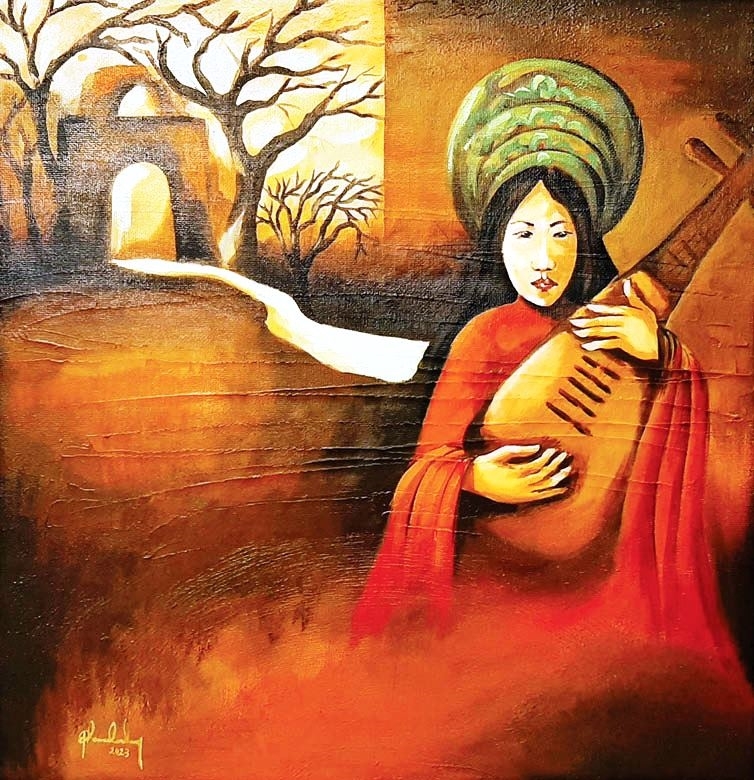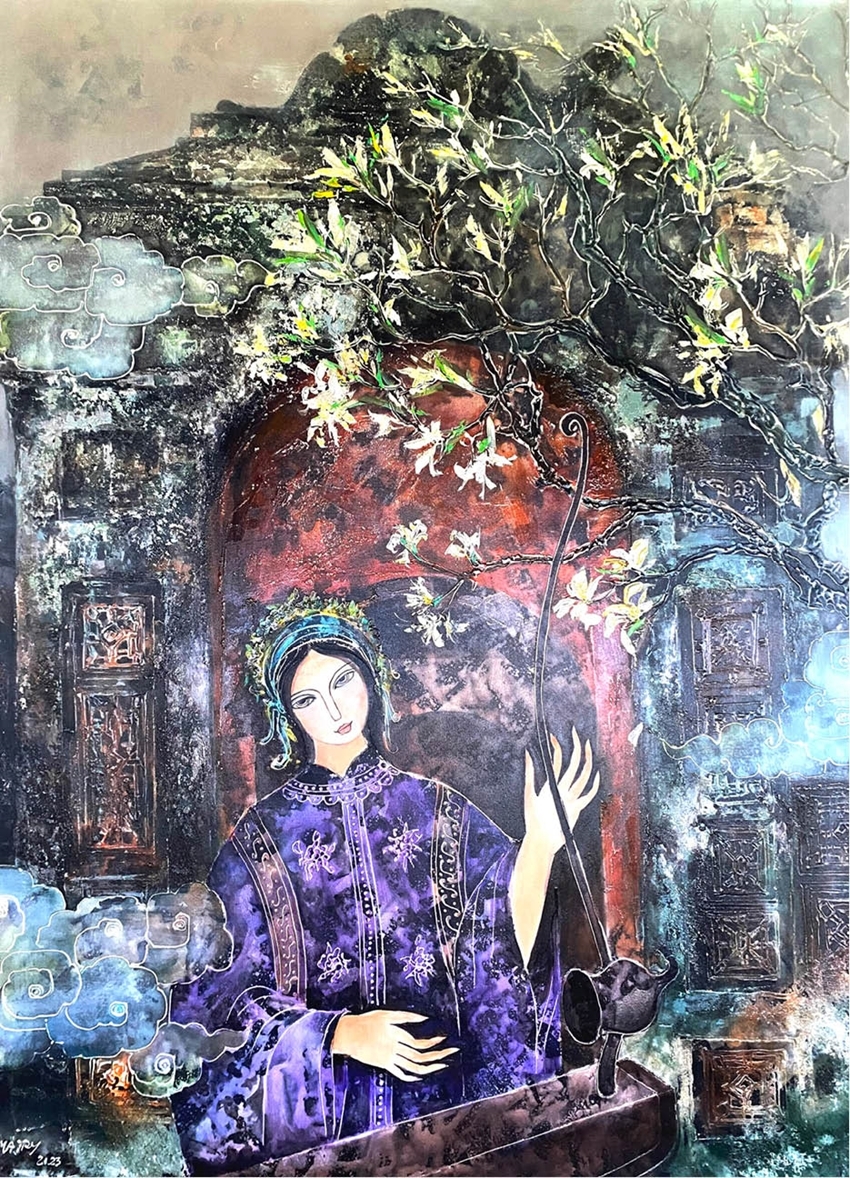    |
 |
| The work "Dance of harmony" by artist Phan Le Chung |
Depicting the beauty of intangible heritage
The poetic space of Truong Lang - Forbidden City in the Imperial Citadel is colorful with the presence of 71 works by 59 authors. With a variety of materials, such as: silk, oil painting, lacquer, woodcarving, watercolor, iron pen, acrylic, Trucchigraphy, digital photos, composite sculpture, installation... and other various forms, the works are carefully invested from materials to creative inspiration and have high artistic quality.
The works reproduce the outstanding features of the royal performing arts through the themes of royal court music, royal dance, royal tuong and Hue-Singing from the artists’ rich visual perspective. Those are aesthetic values distilled from cultural value systems that are exalted through images, colors, blocks...
The beauty of intangible heritage with images, tones, and distinctive lines is clearly shown in the pieces, evoking interesting emotions and perspectives. The images of performing artists, of the tranh, ty, nhi, nguyet instruments, of royal dances, etc., appear both real and virtual. Hidden in them are the artists' philosophies, emotions and love for heritage image.
    |
 |
| The piece "Doc Huyen Cam" by artist Dang Mau Triet |
In the work "Dance of harmony", artist Phan Le Chung takes the background from the co-presentation space of Hue with warm colors to express the inner feelings of a girl playing the ty ba instrument in the moment of changing seasons. The serene beauty evokes many emotions in viewers. The piece "Royal timbre 2" by artist Phan Quang Tan shows the theme of lantern dance with the image of characters stylized with vivid colors.
With the interactive installation artwork "Echoes," artist Do Ky Huy applies interactive digital technology to engage the audience in producing musical sounds when interacting with the artwork. The relief sculpture "Resonance" by artist Nguyen Thai Quang also effectively utilizes material techniques to create visual effects for viewers.
The source of inspiration for the artists
The exhibition "Interpretation of Hue Royal Court Performances through Fine Art" is the result of the second "Fine Art and Heritage" creative camp organized by Hue Monuments Conservation Center and the University of Fine Arts – Hue University. It took place from February 20th to April 10th, with the participation of invited artists, lecturers, and students from the Hue University of Fine Arts.
Having established a connection through several exchanges and discussions over the past two years between the leaders of the two organizations, the "Fine Art and Heritage" creative camp represents the convergence of values between a heritage conservation unit and an art education institution to create works inspired by heritage. This also creates an academic forum for exploring heritage-related topics, thereby providing artistic inspiration for artists in relation to the cultural heritage of Hue.
Mr. Nguyen Phuoc Hai Trung, Deputy Director of Hue Monuments Conservation Center, believes that heritage carries not only significant cultural, historical, and artistic meanings but also holds potential for creative inspiration in various art forms, including fine art. The "Fine Art and Heritage" creative camp is an open and interactive activity that provides artists with an opportunity to nurture their inspiration in exploring, discovering, and creating artworks.
According to Dr. Do Xuan Phu, Vice Rector in charge of the University of Fine Arts, this creative camp has been a multidimensional interactive art activity. The collaboration between royal court music and dance artists, festival costumes, various musical instruments, along with distinctive performance spaces, creates strong emotions and inspiration for artists to develop unique ideas in their artworks.
Through the language of visual art, intangible cultural heritages such as royal court music, court dances, royal tuong, and Hue-Singing are transformed into aesthetically valuable works. In this way, intangible cultural heritages continue to shine alongside the architectural complex of Hue Imperial City.
